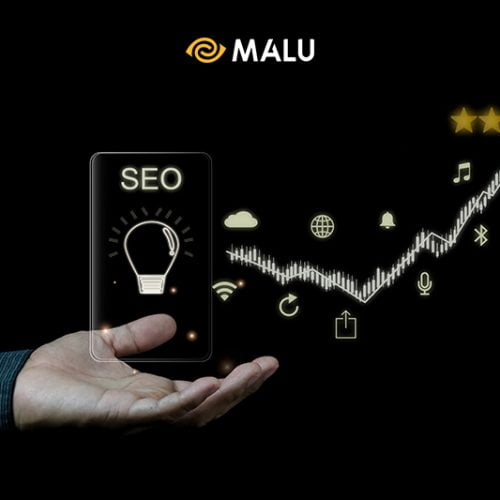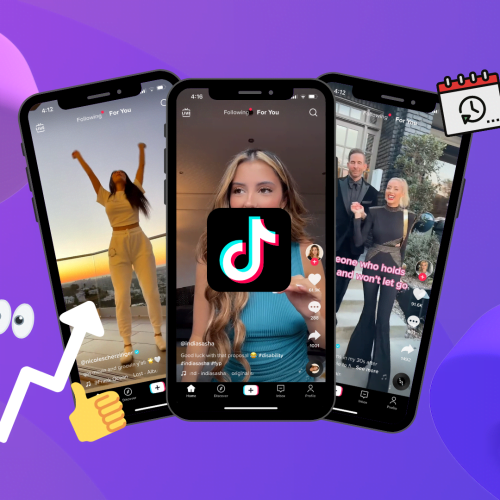Brands use AIDA to determine how they create and distribute marketing messages to target audiences at each stage of the buyer’s journey. AIDA is considered a hierarchy of effects model, meaning the customer must move through each stage of the model to complete the desired action. Just like a regular Marketing funnel, each stage has fewer consumers than the previous stage.
Table of contents of the article
1. What is the AIDA model?
AIDA (Attention, Interest, Desire, Action) is a model that describes four stages that consumers go through before making a purchasing decision. AIDA provides a holistic view of the marketing and communications process , helping marketers better understand how to engage with potential customers and optimize their marketing strategy to achieve business goals.
During these four stages, your content will ideally attract attention to your brand, create interest in your product/service, stimulate desire for it, and drive action. Try it or buy it.
It’s worth noting that each conversion channel can differ in its goals depending on whether they are B2B or B2C and what industry they operate in. The principles of the model remain the same and the channel can be adjusted to suit each business.
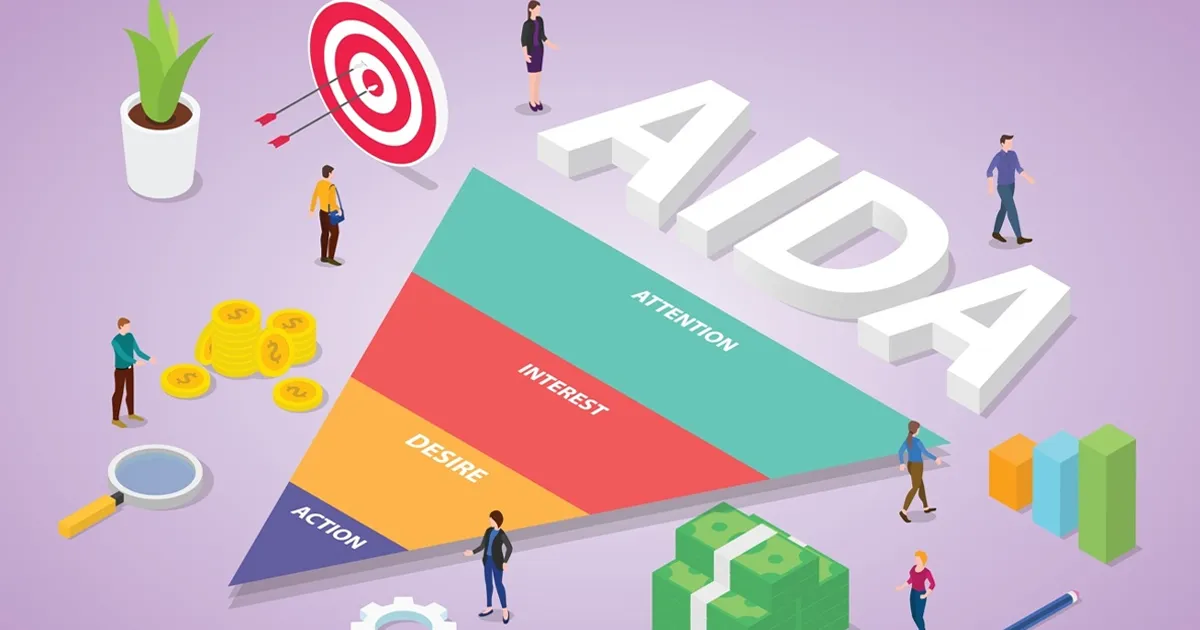
2. History of the AIDA model
In 1898, Elias St. Elmo Lewis , the final inductee of the Advertising Hall of Fame, secretly wrote a column on three advertising principles he found useful throughout his career in the print magazine The Inland Printer, one of the most influential American advertising magazines of the 19th century .
In his article, he said that a successful advertisement must always follow a specific formula.
“The task of advertising is to attract readers, so that they look at the ad and start reading; then delight them and keep reading it; then convince them to believe it. If an advertisement meets all three of these elements, it is a successful advertisement.
In other words, advertising is only good if it attracts attention, creates interest, and persuades, in that order. More than a century later, Lewis’s principles still hold true. They are expressed as the acronym AIDA and are widely used in the advertising industry.
3. Analyze the 4 core elements in the AIDA model
A – Attention: Attract customers
In the AIDA model, phase A – “Attention” is the first step to arouse curiosity and attract the attention of potential customers. This is the fundamental step to lead them on the journey of experiencing products and services.
At this stage, the brand must make consumers ask the question: “What is it?”
Usually, part A – Attention is overlooked by many Marketers. It is assumed that the product/service has attracted the attention of consumers – this may or may not be true. In any case, do not assume that everyone already knows the brand ‘s products . One of the best approaches to capturing consumer attention is called “creative disruption” – breaking existing behavioral patterns through a highly creative message.
I – Interest: Create interest
“I” is “Interest”, or “Concern”. This is the stage where customers begin to pay attention to the business’s products/services and want to find out more information. This stage is very important because it determines whether customers will continue to learn about the product or not. Therefore, it is necessary to create engaging content and provide useful information to pique customer interest.
During this stage, the brand’s goal is to make them think, “I like it.”
To get to this stage, your business’s content must be convincing and attractive. While the first phase of AIDA was getting their attention, this phase is about keeping it.
D – Desire: Desire
In the AIDA model, “D” is “Desire” – evokes desire. This is the key stage after attracting attention and creating interest in the product/service.
The goal of this stage is to turn “I like it” into “I want it,” pushing customers closer to a purchasing decision. And that’s done by strengthening the final piece of the puzzle: Trust.
A – Action: Take action
If the customer has gotten this far, there will be interest. The final step is to close the sale and persuade the customer to act on the benefit, which may involve providing a call to action (CTA).
In a CTA, a product may start at a higher price and then be reduced, often to 1/3 of the original price. Products may be offered two for one and/or free shipping. Improving perceived value can motivate undecided customers. However, if the other steps are done well, customers will have a lasting positive impression of the product even if they choose not to buy it.
The purpose of this stage is for them to decide: “I get it.”
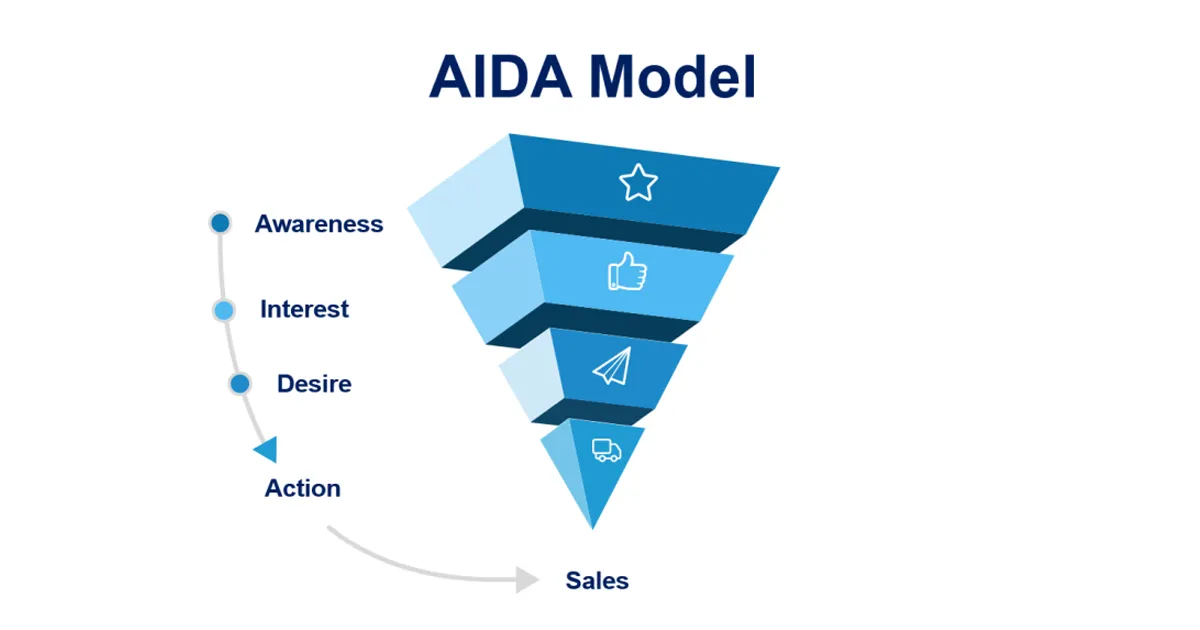
4. The role of the AIDA model in Marketing
Provide a picture describing potential customers
Because the AIDA model divides the consumer experience into key stages, marketers can analyze customer behavior at each stage, gaining valuable insights into what motivates consumers to choose a certain product/service.
For example, the Marketing team can work to improve the awareness stage of a consumer’s experience with a brand. By conducting surveys, they can measure brand awareness and create strategies to expand the company’s social media activity and website traffic. They can track website visits and social media activity to evaluate the effectiveness of the plan.
Create an effective marketing plan
Understanding the AIDA process helps marketers increase the effectiveness of their marketing plans by creating appropriate content and strategies for each stage. For example, they can use creative advertising measures to attract attention, provide attractive information to create excitement, use strategies that stimulate desire and differentiate products, and finally, create favorable conditions for customers to make purchases.
Flexible application
AIDA does not constrain businesses within a rigid framework, but encourages creativity and variation to suit each product, each customer and each specific campaign.
AIDA’s flexibility is demonstrated through the application of diverse strategies, from advertising to attract attention, to attractive content that piques interest, to calls to action that persuade customers to shop. Each strategy is finely adjusted, creating optimal effectiveness for each specific goal.
Increase customer loyalty
Using AIDA to analyze customer behavior can help marketing teams create promotions and content that build customer loyalty to the brand. If the team understands why customers are interested in a certain product, they can tailor the communications and advertising activities the business uses to emphasize key values.
For example, using AIDA could help the marketing team at a clothing company realize that customers value sustainability-related activities. They can publicize the company’s compliance with sustainability standards and create content about how well the company treats its employees. This campaign can help them get regular customers.
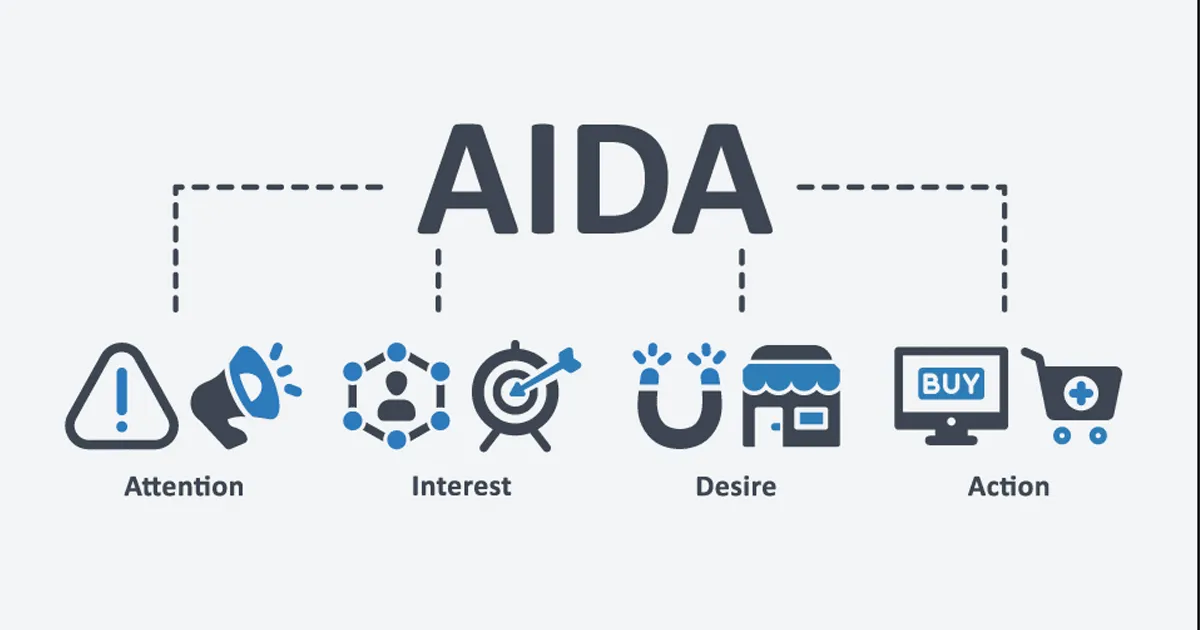
5. How to apply AIDA in Marketing?
Attention
In the first stage of the AIDA model – “Attention”, businesses need to focus on attracting the attention of potential customers. This is an important step that decides whether customers will continue to learn about the product/service or not.
To achieve this goal, businesses need to use unique, effective strategies that make a strong impression:
- Understand clearly who your potential customers are, what they are interested in, and what information channels they often use. From there, businesses can build appropriate marketing messages and strategies.
- The message needs to be short, concise, easy to understand and highly convincing. Businesses can use elements such as questions that arouse curiosity, eye-catching images, and impressive videos to attract customers’ attention.
- Choose communication channels suitable for the target audience and the message you want to convey. For example, if the target audience is young people, businesses can use communication channels such as social networks and influencer marketing. Some suitable channels during this period include SEO, Facebook advertising, Google, PR,…
- Use techniques such as storytelling, creating curiosity, and using humor to attract customers’ attention.
Interest
Generating interest is generally the hardest part. For example, if the product/service is not inherently interesting, it will be difficult to achieve this. Make sure your ad information is broken down and easy to read, with interesting subheadings and illustrations. Focus on what is most relevant to your target market regarding your product/service and convey only the most important message your business wants to convey to consumers.
A good example of this is the story “Where is the beef?” by Wendy. This advertising campaign focuses on the fact that Wendy’s burgers have more beef than their competitors’ burgers.
In this step, businesses use appropriate communication channels to provide information, such as websites, blogs, social networks, emails, etc. Clearly explain the benefits that potential customers will receive when using products/services. Use specific examples and vivid illustrations to highlight benefits.
Desire
The second and third steps of the AIDA model go together. Since the Marketing team is hoping to build interest in the product/service, it is important that they help customers realize why they “need” this product/service.
Think about how the content is presented in infomercials – they aim to provide interesting information about a product, along with the benefits of buying that product – ideally benefits that consumers want that product even more. Businesses can create customer desire for their products/services by:
- Prove that their product can solve the problem
- Associate desired values such as friendship or happiness with a product
- Express your brand’s personality.
Action
Ads should end with a call to action – a statement designed to get an immediate response from customers. For example, Netflix uses concise content to persuade consumers to try a free trial. Netflix communicates the convenience of the product and highlights its value, then urges consumers to sign up for a free trial.
Good advertising must evoke a sense of urgency, motivating consumers to act NOW. One commonly used method to achieve this goal is to offer limited-time offers (such as free shipping).

6. Limitations of the AIDA model
It doesn’t take into account the non-linear buyer’s journey
The AIDA model describes the buying journey in a linear sequence, including attracting attention, evoking interest, creating desire, and motivating action. However, in reality the consumer purchasing journey is often more complex and non-linear. They can move back and forth between different stages, skip some stages, or even go back to the beginning of the journey.
It doesn’t account for impulse purchases or super short sales cycles
AIDA is not suitable for products/services with extremely short sales cycles. In this case, consumers can make purchasing decisions very quickly, based on temporary emotions or external factors such as promotions and discounts.
Just a small part of the overall business strategy
To achieve optimal effectiveness, AIDA needs to be combined with other models and strategies to create a comprehensive strategy. For example, it is necessary to use market research methods to understand customer needs and desires, thereby developing appropriate products. Build a competitive pricing strategy and effective distribution system to bring products to customers. Train a professional sales team and attentive customer service to attract and retain customers.
Focusing on one AIDA element for each marketing tactic may not be effective
Even when using channels for a specific aspect of the business rather than an overall strategy, businesses can easily fall into the trap of AIDA’s four-letter division and apply one letter to each tactic in your Marketing strategy.
For example: A marketer might think this blog post is about getting customers’ attention, and focus on just that. However, ideally a blog post should attract awareness and generate interest, and at least cause them to take some action before they leave the site.
In other words, Marketing activities can cycle potential customers through many stages of AIDA. For example, an effective ad can advance 3 or 4 stages of AIDA, motivating potential customers to take action.
It’s almost too simple
This model only describes in general the customer’s purchasing decision-making process, including four stages: attracting attention (Attention), arousing interest (Interest), stimulating desire ( Desire) and promote action (Action). However, in reality the purchasing process is often much more complex and diverse than the AIDA model describes.
The AIDA model cannot demonstrate:
- Differences between individuals : Each person has different purchasing behavior, influenced by many factors such as preferences, habits, personal values,…
- Environmental influence : External factors such as the social, cultural, economic environment, etc. also impact customers’ purchasing decisions.
- Non-linear decision-making process : Customers may return to previous stages in the purchasing process, or skip some stages.
Therefore, the AIDA model should only be used as a starting point for building a marketing strategy. Marketers need to combine the AIDA model with other models, as well as market research, to better understand the purchasing behavior of target customers.
7. Case study on the application of AIDA by major brands
Apple
When introducing the iPhone, Apple used the AIDA model and achieved successful results.
- They announced that they were launching a new product, one that had never been seen before. This raised awareness about the new product and expectations from Apple.
- Steve Jobs then took the stage creating Concern. He explained what the product is, what its outstanding features are,…
- The wish stage builds as Steve Jobs explains to customers how it will solve the problems they have with their existing phone. Customers’ needs are to use the phone without a stylus, to limit unwanted button touches, and for the phone to be more accurate.
- The action was enhanced when Jobs used his phone on stage. To show customers that it is real and will actually benefit them. It sets the iPhone apart from its competitors.
During the introduction of the Apple Watch, Apple took a similar approach.
- At this time, the Apple brand was firmly established. They just need to create curiosity about their new product. They simply put out an ad that said: “Apple Watch is coming soon.” Without giving any detailed information about the product, they created curiosity among customers about the newly launched product.
- Tim Cook then introduced the Apple Watch with the iPhone 6. Their features and different designs and straps were explained to customers.
- Create a desire to buy the product with a focus on advertising the watch to help users track their fitness. Along with the fitness features it offers, the watch also has features like customers can talk, text, perform operations through it. They explain how the watch will benefit health monitoring while also having many functions like a smartphone.
- Finally, Action is where Apple’s brand image comes in because the brand very often uses pre-orders after product launches to ensure increased sales.
Netflix
When Netflix expanded into India, the biggest problem they faced was that Indians already had free and seamless access to content across various platforms with the majority of homes having connectivity. cable. Netflix had to attract a new market and convince them to take over Netflix. Here’s how they use the AIDA model:
- To create awareness, Netflix used traditional outdoor advertising by placing giant posters for shows like Narcos, Friends, etc.
- At the desire creation stage, Netflix focuses on India’s young population. Customers will see a 1-month free trial on the site, creating curiosity about other shows being shown on Netflix.
- After experiencing Netflix for a month, the desire to continue with Netflix will become stronger with documentaries, original shows, many original web series, large collection of Hollywood and Bollywood movies, features like support for all devices, personalized recommendations based on viewers’ viewing habits, high-resolution videos,…
- Ultimately, customers will take action when Netflix offers multiple subscription plans depending on the customer’s budget. Customers at this point are attracted to what is being offered and it is now easier to convert customers.
Adidas
Being one of the most famous and oldest brands doesn’t mean they don’t follow the AIDA model. In creative ways, Adidas also uses this model in its marketing and sales strategies.
- The main motive here is to show people how cool it is to own Adidas. To increase awareness of their new products, they partner with celebrities, especially with famous athletes. The fan following of these athletes combined with the Adidas brand is enough to create buzz about new products and drive them to the website.
- To create interest, the website has equally curious words and phrases. Simple phrases like “see possibilities” to test out new products works wonders because it connects the audience to the brand more deeply. Brands also use headlines like “save up to 50%” and “new” to attract customer interest.
- Celebrities and behind-the-scenes photos of the launch event are some of the things that keep curiosity growing. The exclusivity that the brand represents is exactly what customers want.
- Sales then became simpler for Adidas because the product’s superior quality and features were combined with promoting the content “If you can be like your idol, Adidas is the right choice”.

Despite its limitations, the AIDA model is a solid framework for guiding your audience through the buyer’s journey and motivating them to take action. With massive changes across the entire media landscape, both online and offline over the past decade, it is important to adapt and react to changes in the behavior of your target audience.


